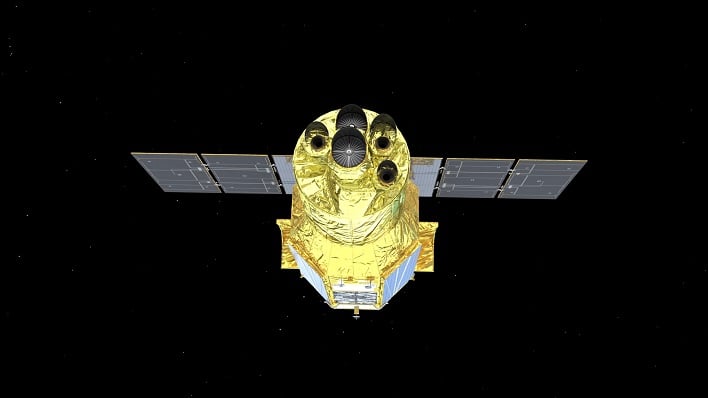NASA Collaboration Will Seek Out Near-Light-Speed Particle Jets Fueled By Black Holes

XRISM, led by JAXA, is a mission that will take a much closer look at the wonders of the cosmos than other missions like the James Webb Space Telescope can. By utilizing XRISM's microcalorimeter spectrometer, a collaboration between JAXA and NASA, researchers aim to gain a deeper understanding of the composition and motion of extremely hot gas within clusters of galaxies, near-light particle jets powered by black holes in active galaxies, and other mysteries of the universe.
"I think we will all get excited for the beautiful images we get from missions like NASA's James Webb Space Telescope," explained Sophia Roberts from NASA's Goddard Space Flight Center. "But after taking a deep dive into spectroscopy, I really appreciate the critical context it gives scientists about the story behind those pictures."
XRISM's microcalorimeter spectrometer, named Resolve, measures extremely small temperature changes that are created when an X-ray hits its 6-by-6 pixel detector. In order to measure that tiny amount of increase and determine the X-ray's energy, Resolve's detector needs to be able to cool down to approximately minus 460 Fahrenheit (around minus 270 Celsius). It is capable of reaching its operating temperature through a multistage cooling process located inside a refrigerator-sized container of liquid helium.
While Webb is capable of capturing similar spectra, XRISM's Resolve instrument will be able to do so at higher energies. This will help to "paint a fuller picture of these objects," according to a NASA blog.
Roberts explains in the video above that many objects in space are "simply too far away to image." She adds that a lot of data comes from pixel-size point sources and those points provided astrophysicists with a powerful window into what makes up our universe. Spectroscopy allows astrophysicists to peer into the universe on a deeper level than with images alone.
XRISM is expected to deliver breakthrough results in diverse scientific areas that include the evolution of the universe's largest structures, and the behavior of matter in extreme gravitational fields. The mission is slated to launch sometime later this year.

